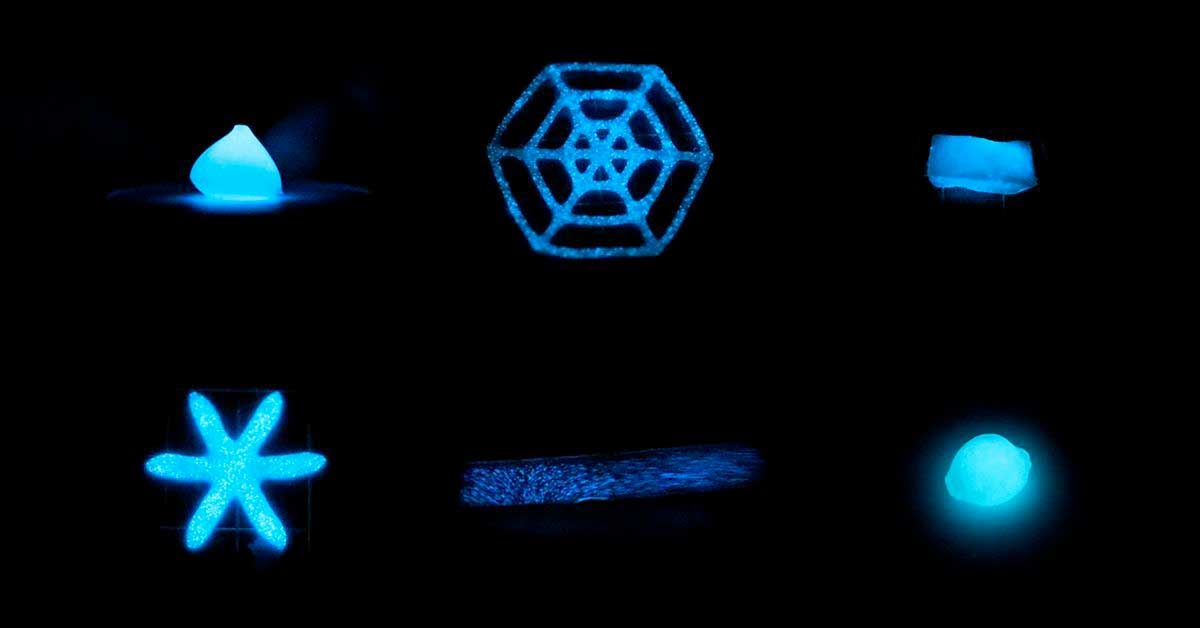Researchers at the University of California at San Diego, in collaboration with the University of Amsterdam, have developed soft yet resilient materials that begin to glow when subjected to mechanical stresses such as compression, stretching or twisting. The luminescence is based on bioluminescent dinoflagellate-type algae.
Inspired by the luminescence of red tide on San Diego beaches, the researchers mixed dinoflagellates and the polymer alginate and used a 3D printer to form them into various shapes such as grids, spirals or spheres. When the material is compressed, stretched or twisted, the dinoflagellates react by emitting light. This corresponds to their defense mechanism against predators in nature.
The stronger the force, the brighter the glow. The researchers were able to quantify this and predict it in a model. To make the materials more resilient, a second polymer called poly(ethylene glycol) diacrylate was added. With a coating of the rubber-like polymer Ecoflex, the materials were also made resistant to acids and alkalis and could be stored in seawater for months.
The dinoflagellates require cyclic light and darkness. In the light phase they perform photosynthesis, in the dark they release light when force is applied. This is consistent with their red tide behavior.
According to the researchers, the study demonstrates a simple method of combining living organisms and inanimate components to create smart materials. Conceivable applications include pressure or strain sensors or in medical technology. However, improvements are still needed before such applications are feasible.
Subscribe to our Newsletter
3DPResso is a weekly newsletter that links to the most exciting global stories from the 3D printing and additive manufacturing industry.























